Heyzor 潮汕虾枣 is one of the most iconic Teochew dishes of all times. On the surface, it may look simple – deep-fried prawn rolls – but when you dig deeper, you’ll realise that a lot of work and experience is required to make this deceptively easy recipe.
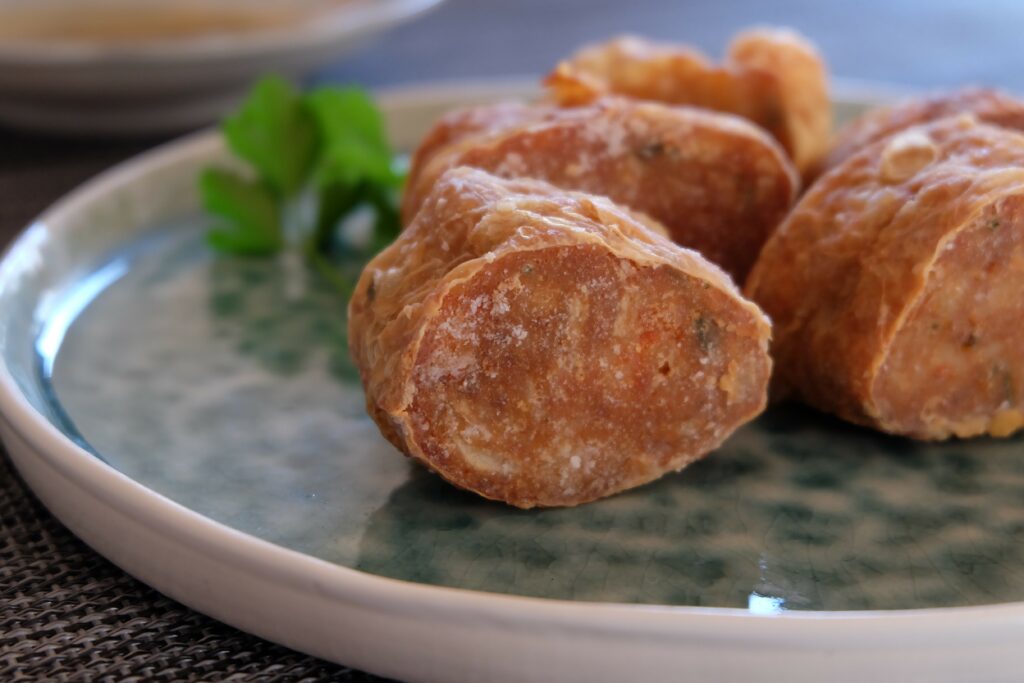
A word about Teochew cuisine 潮汕
Teochew 潮汕 is a subset of Minnan culture 闽南, which covers much of modern-day southern Fujian province, Chaoshan region in Guangdong province, the whole of Taiwan, and to a certain extent, the tropical island of Hainan. The Minnan Chinese language predates all other modern Chinese languages, as a direct descendant of Old Chinese with original native Austronesian influences, with sounds and syntax dating back to 1000BC-500BC.
Teochew cuisine is a sub-cuisine of Minnan cuisine, with a lot of stews, a heavy accent on soups and a love for seafood such as oysters and mussels.
Its style is heavily influenced by the Cantonese 广东 cuisine because of its geographical location in the Guangdong province. This is where a lot of foreign influences arrive, compared to core Minnan cuisine, because of Guangdong being a medieval maritime centre, such as the use of basil, tomatoes and chillies.
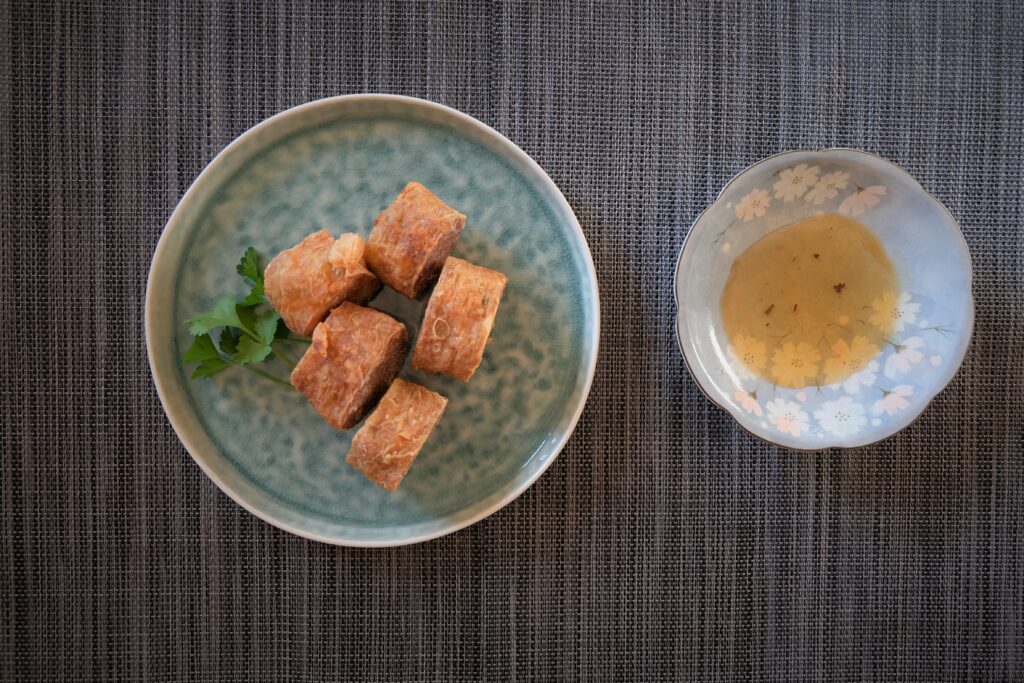
The Different Versions of Teochew Heyzor 潮汕虾枣
If you look around, especially in mainland China, the non-Teochew mainland Chinese tend to confuse Heyzor with prawn balls. This is because in one version of Heyzor, they do not add tofu wrap and simply deep-fry the ingredients in a ball.
Also, all Heyzor versions need a crunchy vegetable and it really differs from recipe to recipe.
You can either use Chinese celery 芹菜, jicama 沙葛, or water chestnut. The most popular vegetable is water chestnut, which is called Ma Ti 马蹄/马荠 or Bí Jì 荸荠/荸薺 in Mandarin Chinese. In Minnan Chinese, it is called Bè-Tsî 马荠.
The proportion of the prawns and pork also differs greatly. In the original Teochew heartland of Chaoshan, the practice is very much one part pork to four parts prawns.
Big fresh prawns are expensive and hard to come by where I live in Northeast Europe, hence I have used the Singaporean version of this dish, which uses less prawns: two parts pork to one part prawns.
Also, while the pork needs to be really fatty, some original Chaoshan recipes have called for pork fats altogether, which in my opinion is too much if you use the more-pork recipe like I do.
The binding flour used in this Singaporean recipe is corn starch 生粉, while in Chaoshan they tend to use tapioca starch 薯粉. Note that in this recipe, it is corn starch and NOT corn flour, which is in fact semolina or polenta. Corn starch is not replaceable by corn flour. You can recognise corn starch because it is white and very fine while corn flour or corn meal is yellow and much coarser.
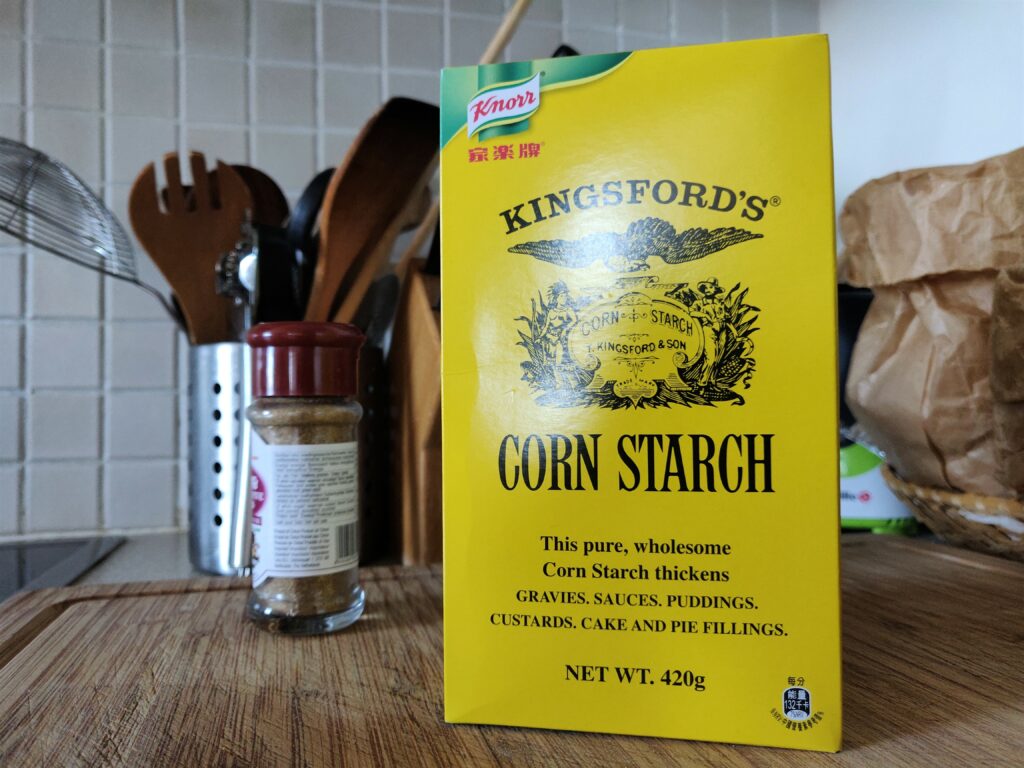
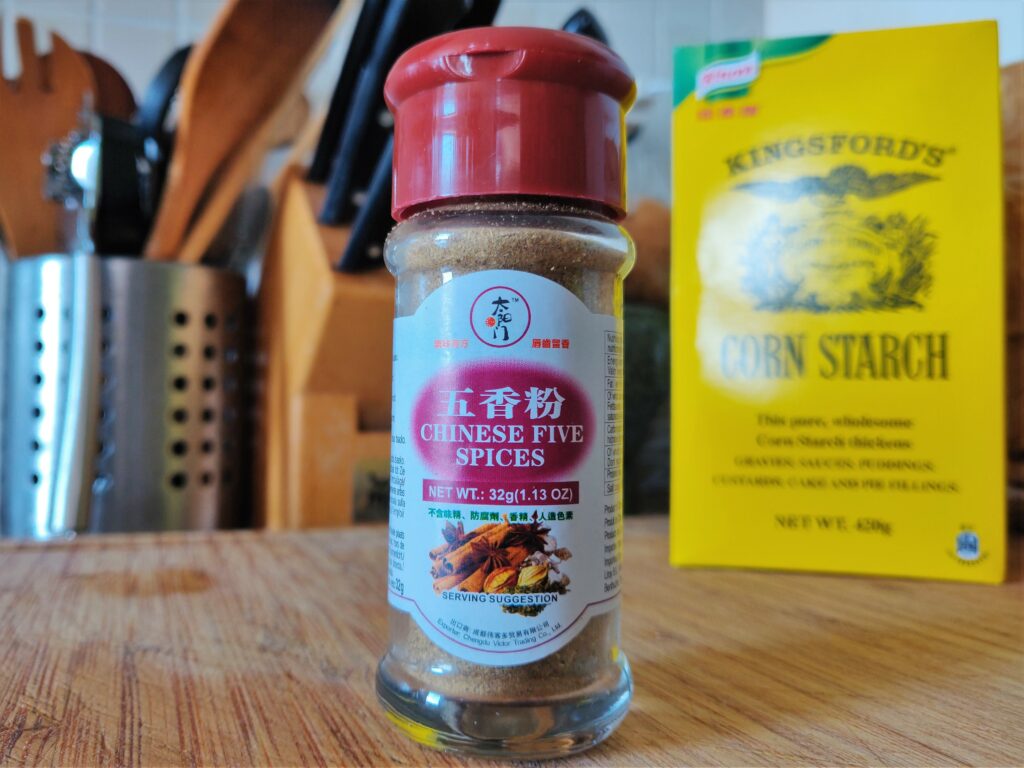
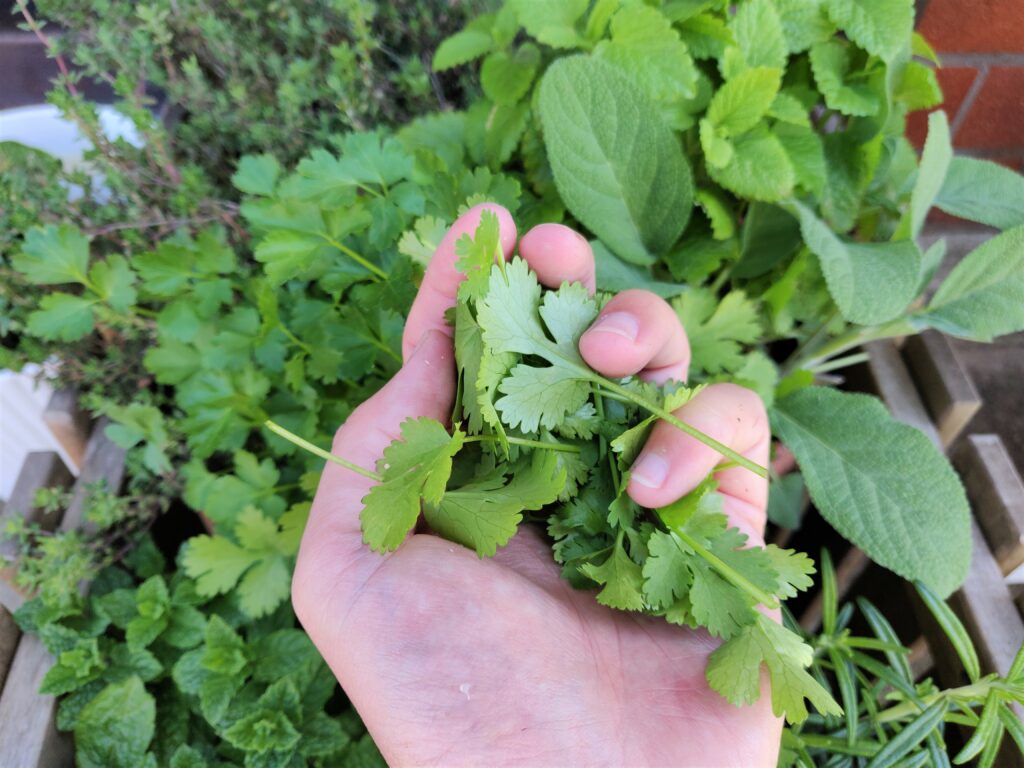
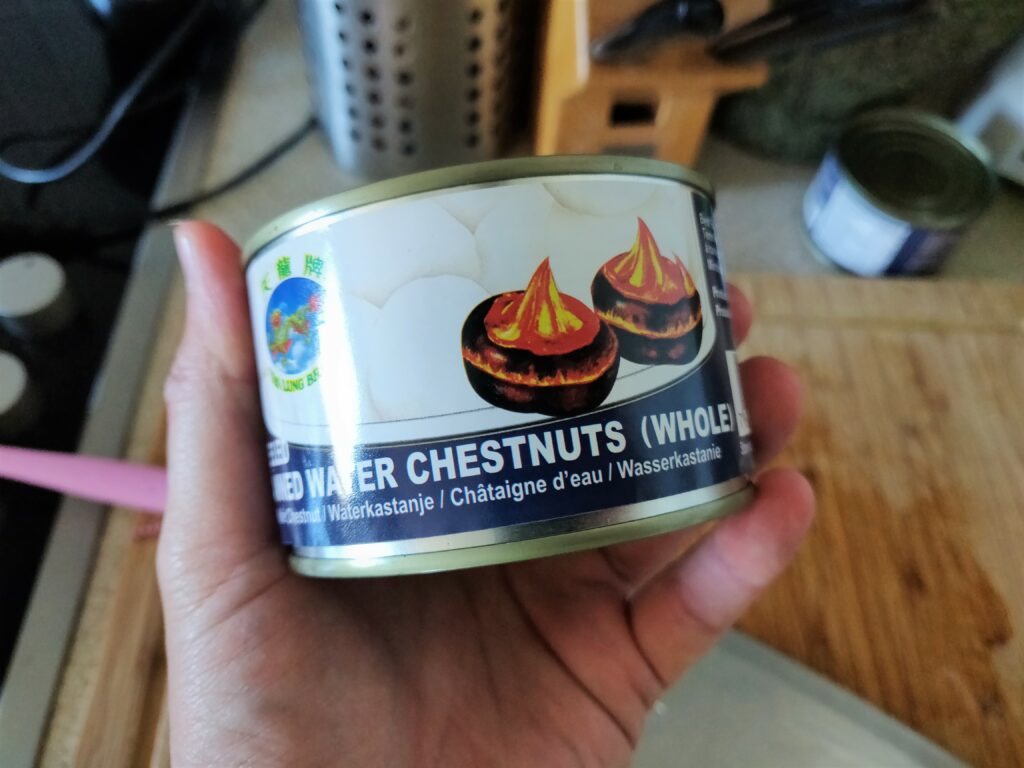
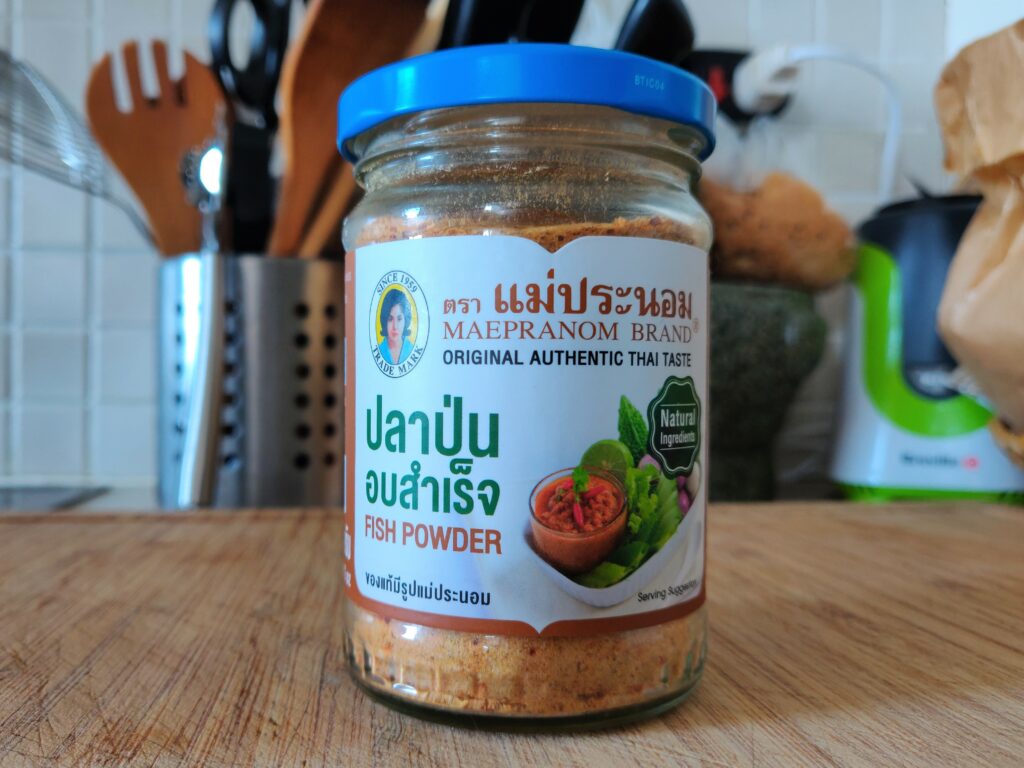
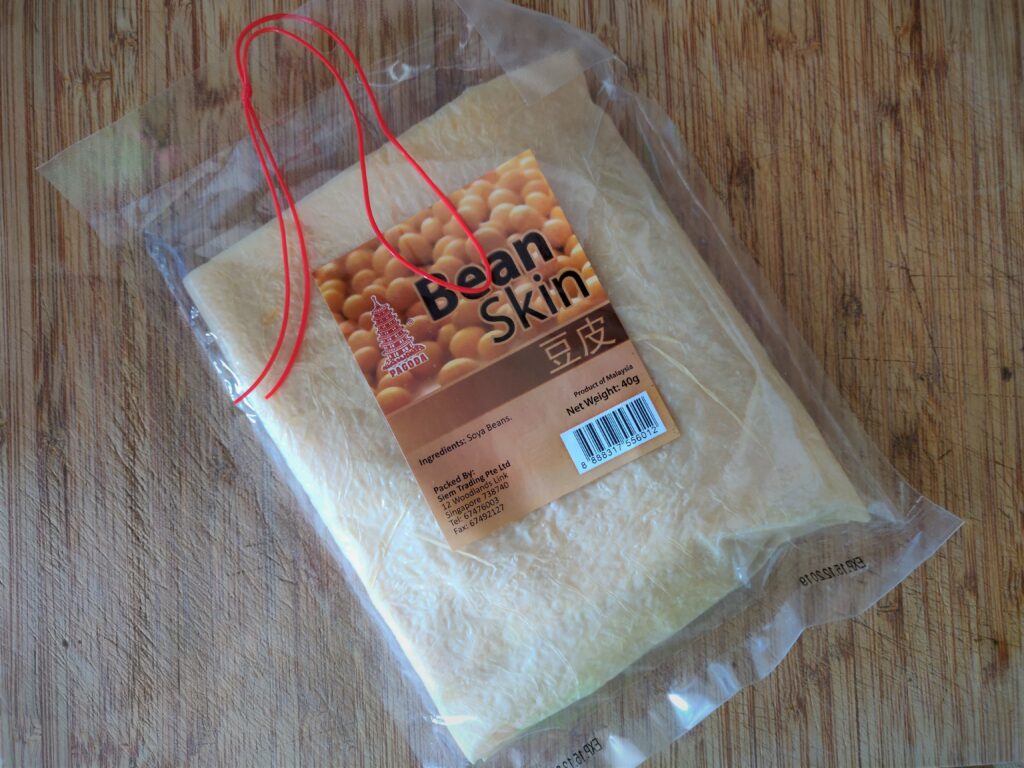
Two things to note when you are making your Teochew Heyzor 潮汕虾枣
Note about the deep-frying: You may need to change the oil, because the dry flour will certainly cloud your oil and interfere with the frying. Because of this, do not cover your heyzor with too much dry flour. Some original Chaoshan recipes call for a wet flour mixture, which in my opinion turns your heyzor into prawn balls – which is where the misunderstanding occurs for the Chinese who know very little about Teochew cuisine. Use a strainer to scoop up the charred flour in your oil from time to time to clear it.
Note about the tofu wrap: Also known as tofu skin or beancurd skin in anglicized places like Singapore and Hongkong, the Chinese name for this is Xianfupi 鮮腐皮, Doufupi 豆腐皮, or Fuzhumo 腐竹膜. It is made with soybeans but has nothing to do with tofu. Available in folded sheets, they are often lightly salted. The longer you keep them, the less pliable they are. When they are not pliable, they crack. It is vital that you buy really fresh tofu wraps so that you won’t have to deal cracks and tears. Also, once you open a pack of tofu wraps, it will dry up and crack within days, so it is important that you use only one pack at a time.
This recipe makes about 8 prawn rolls, which cuts into 4 pieces per roll, will give you 32 heyzors.






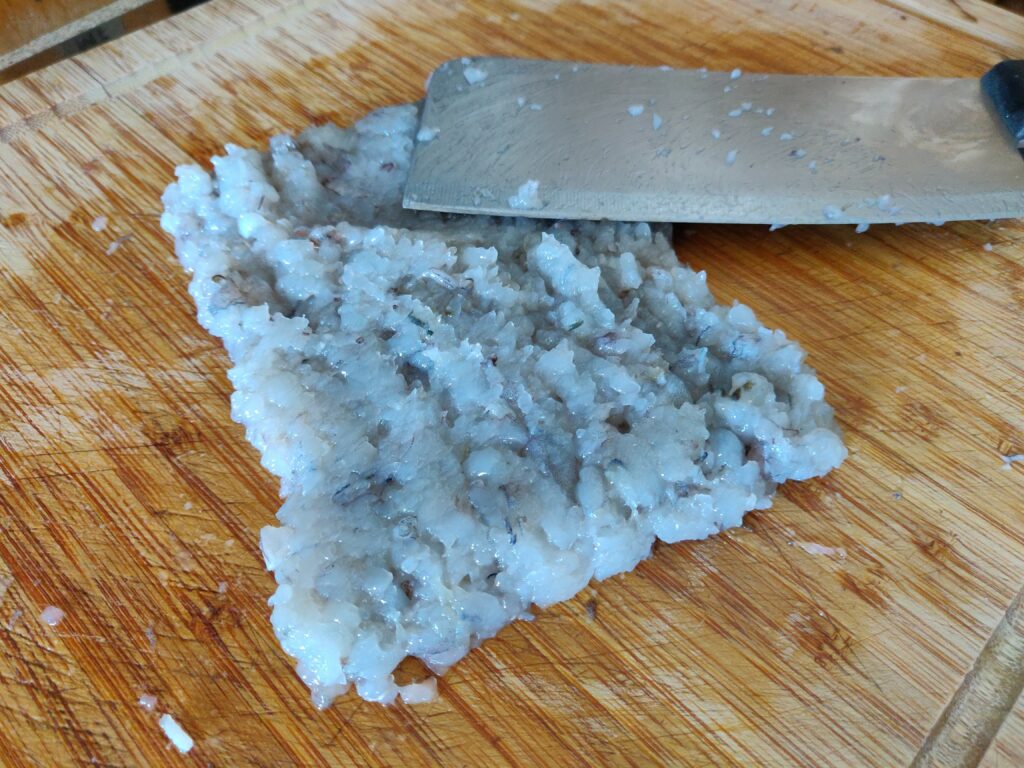
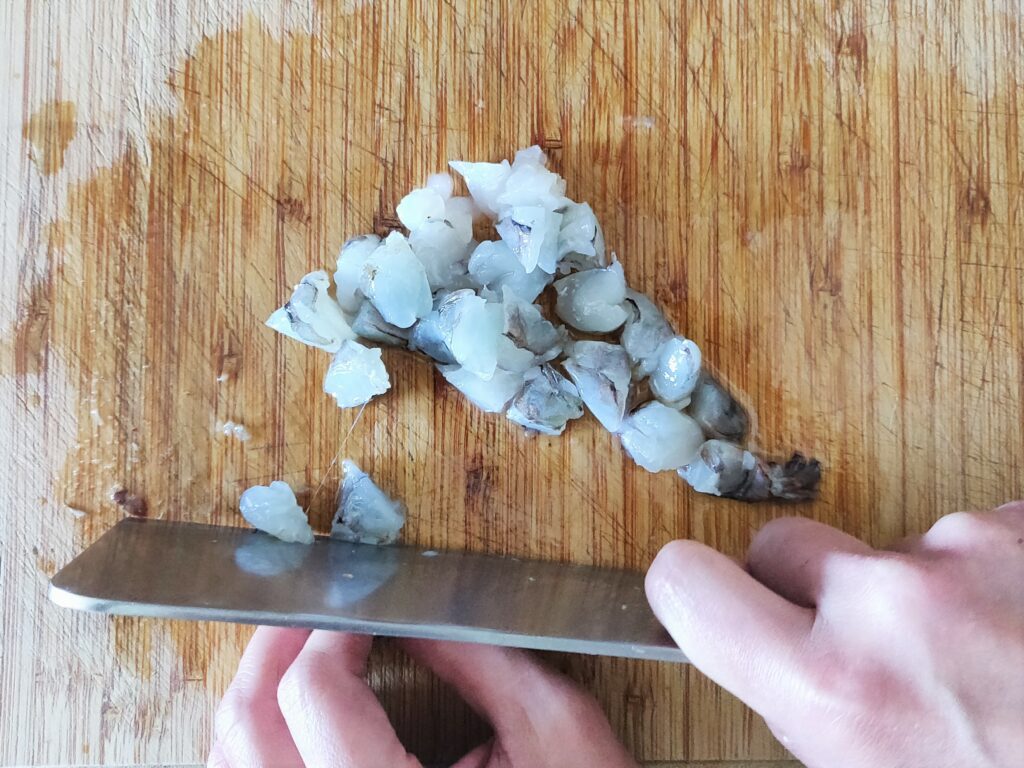
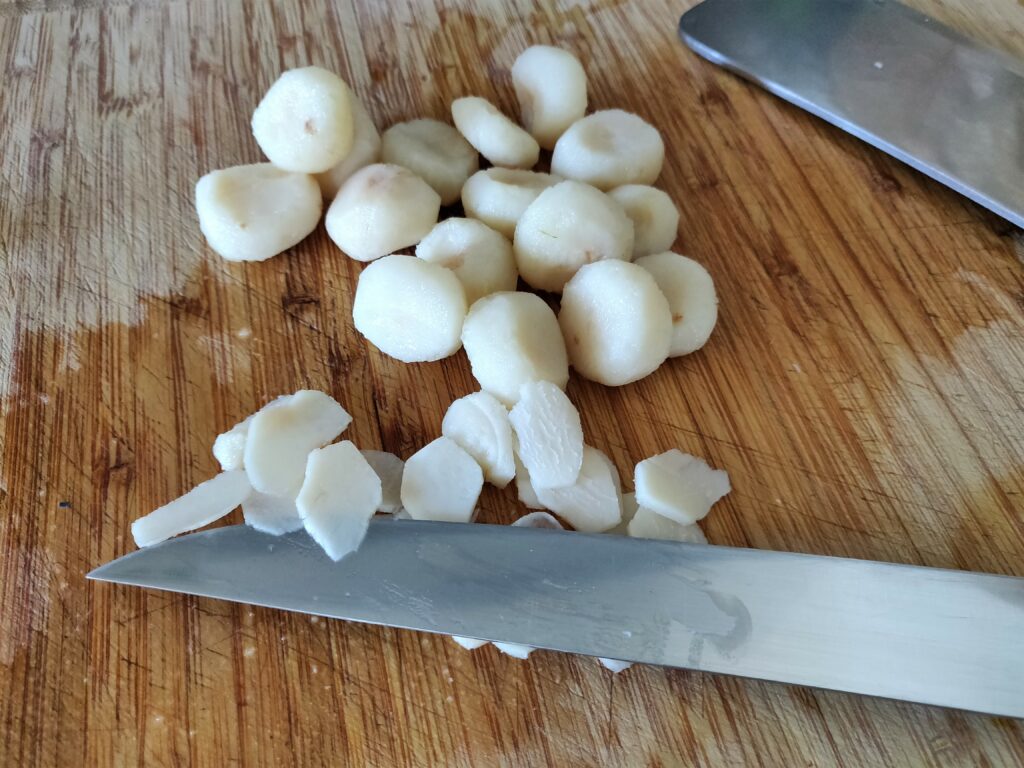
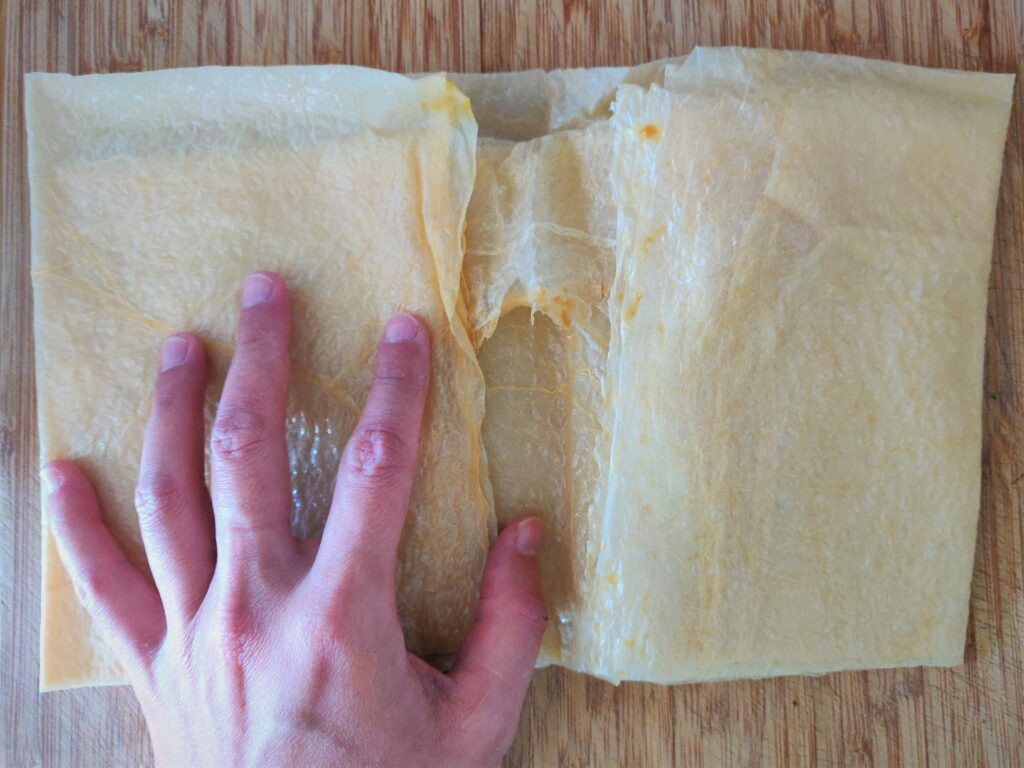
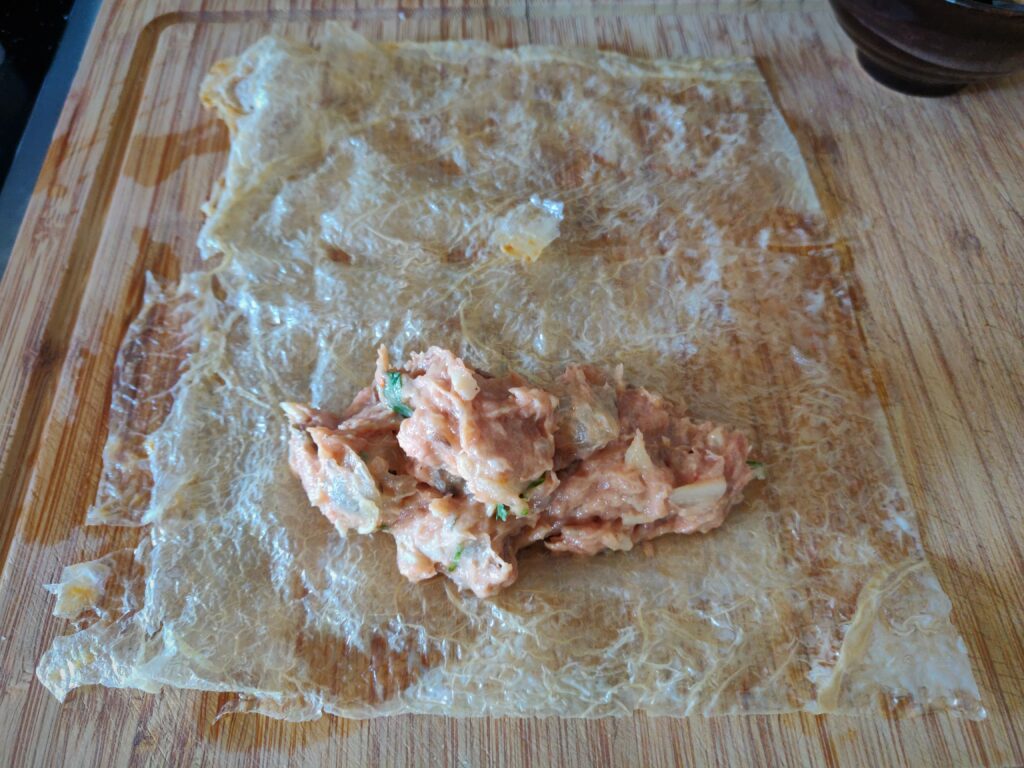
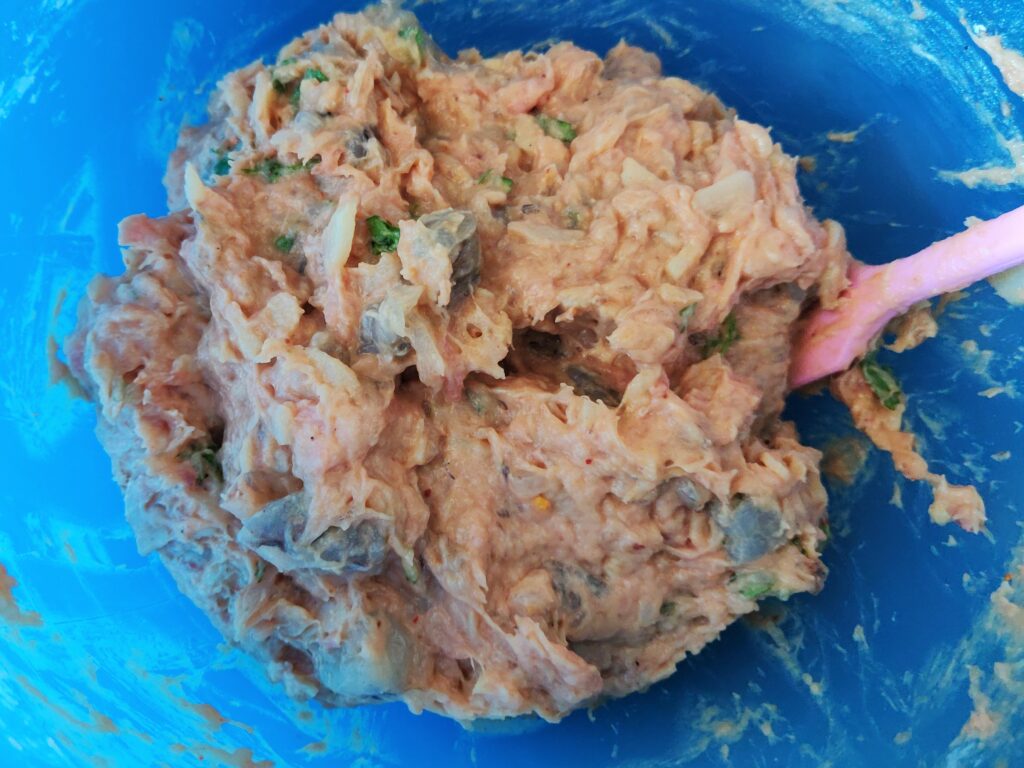
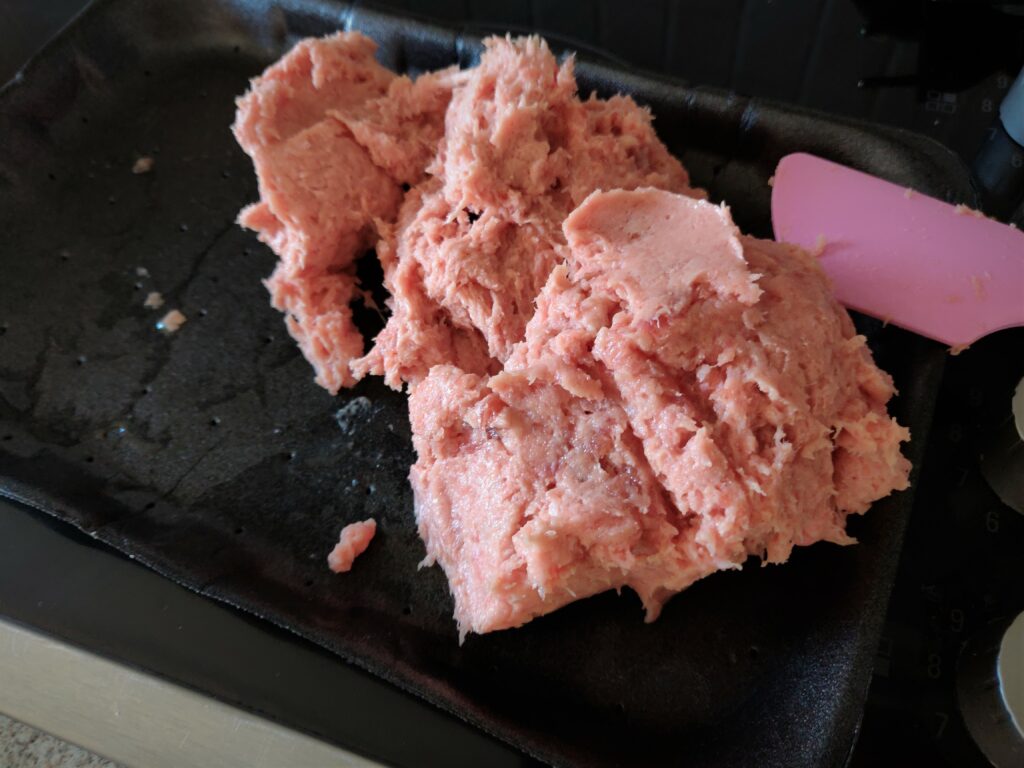
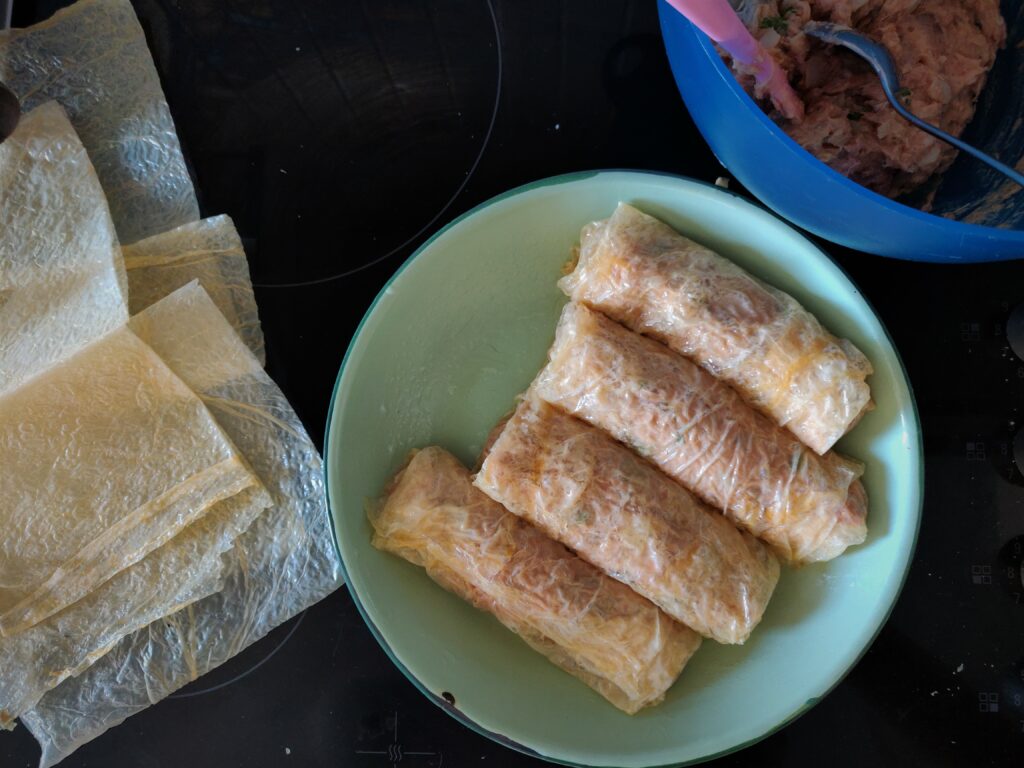
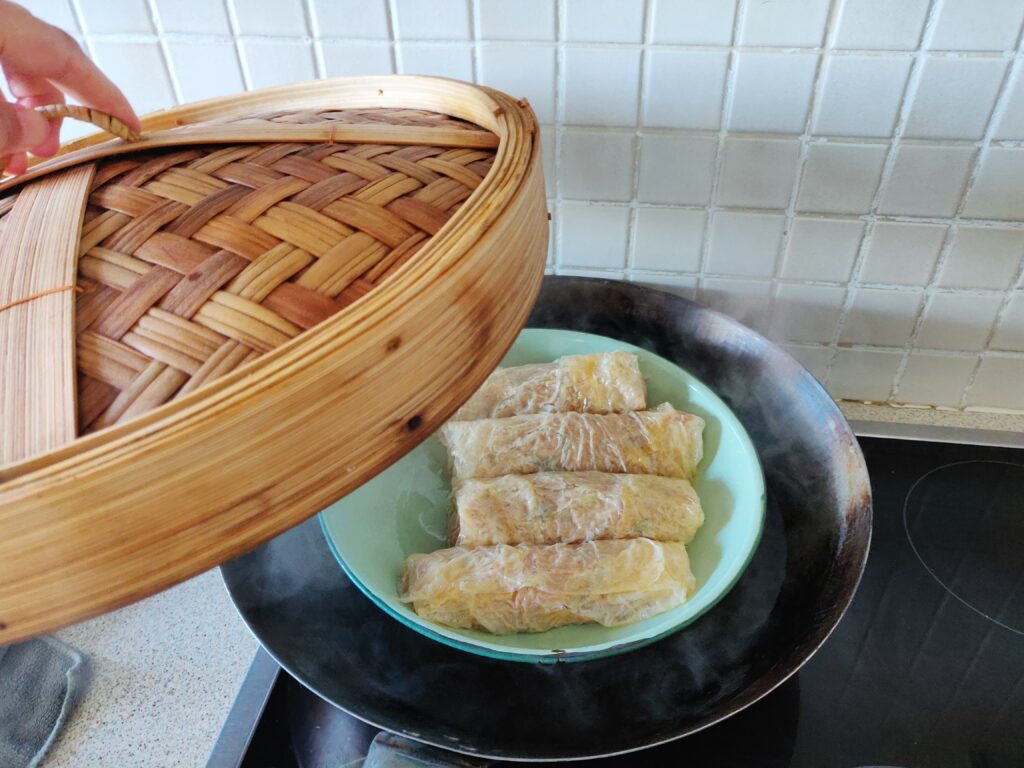
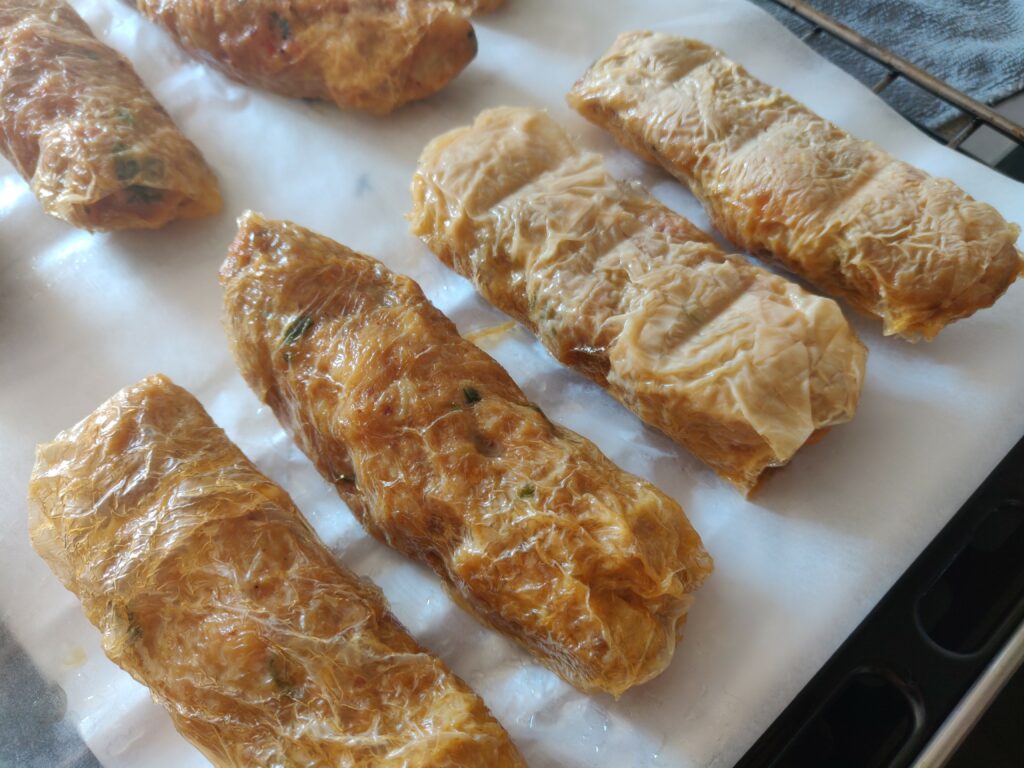
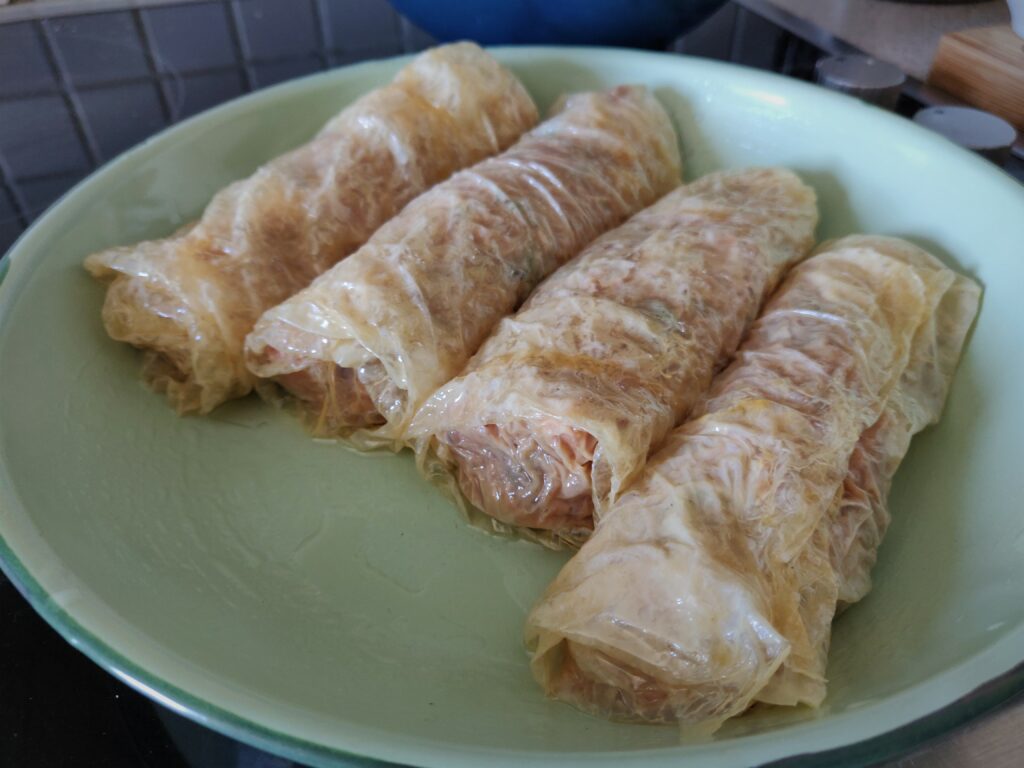
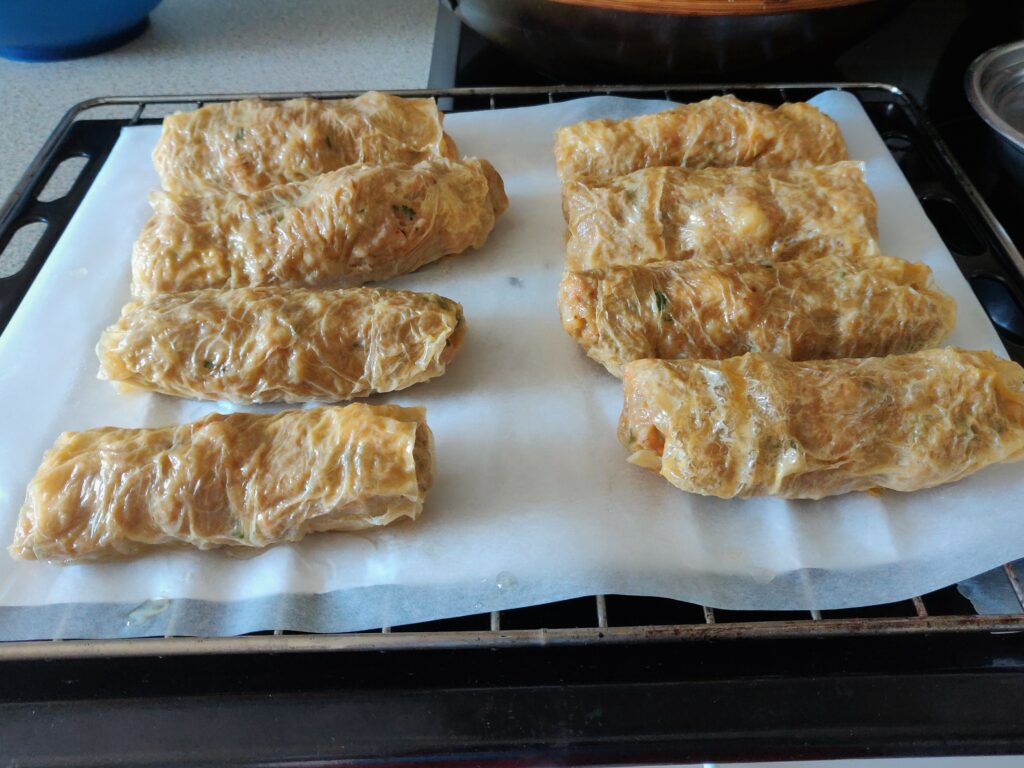
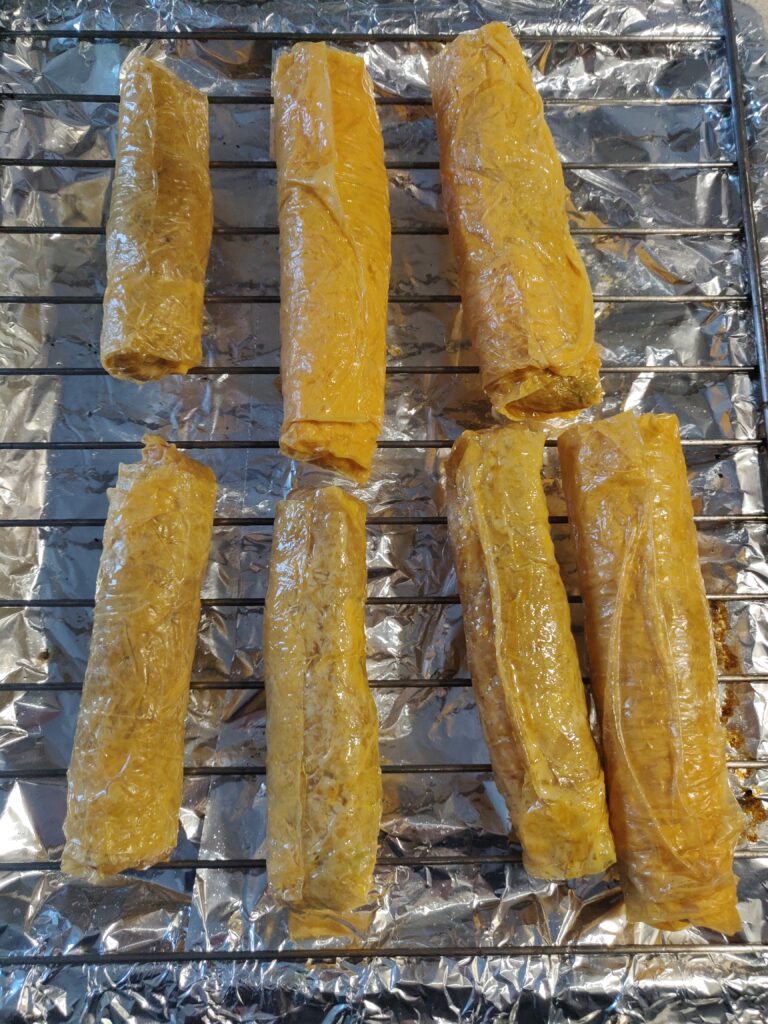
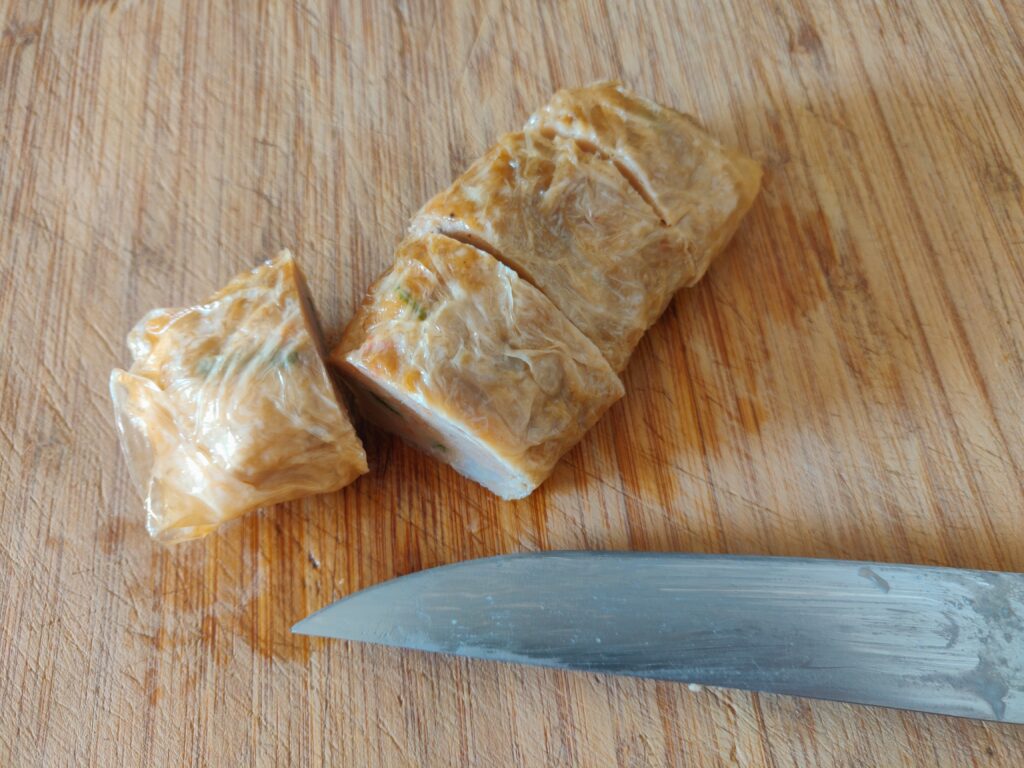
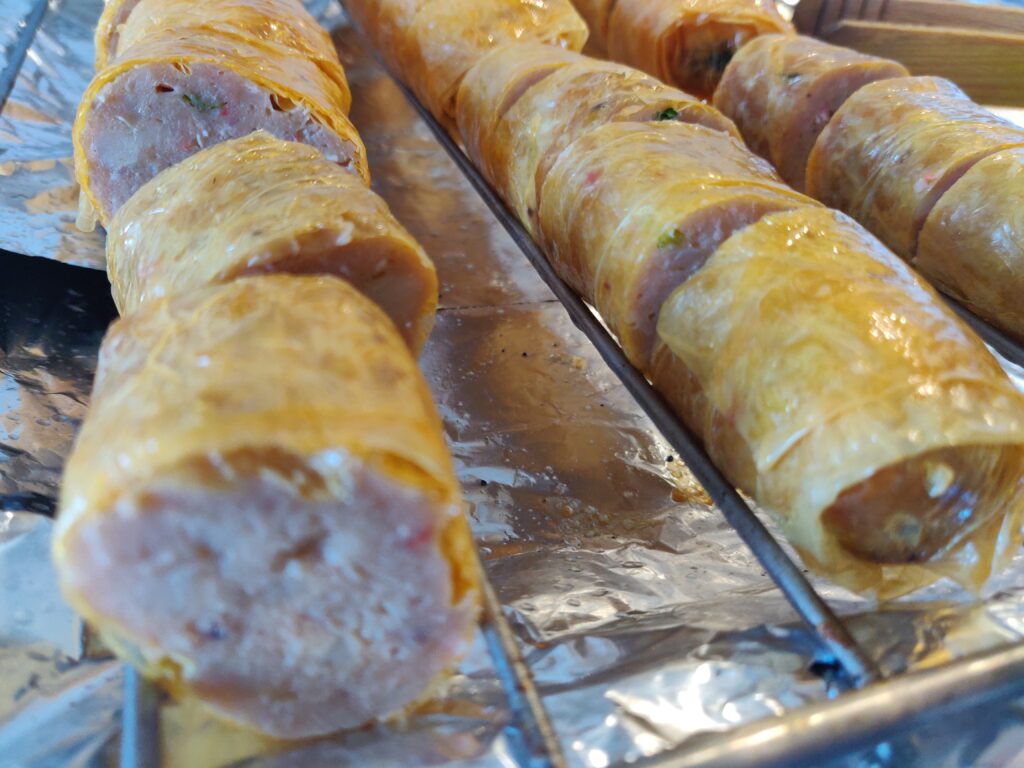
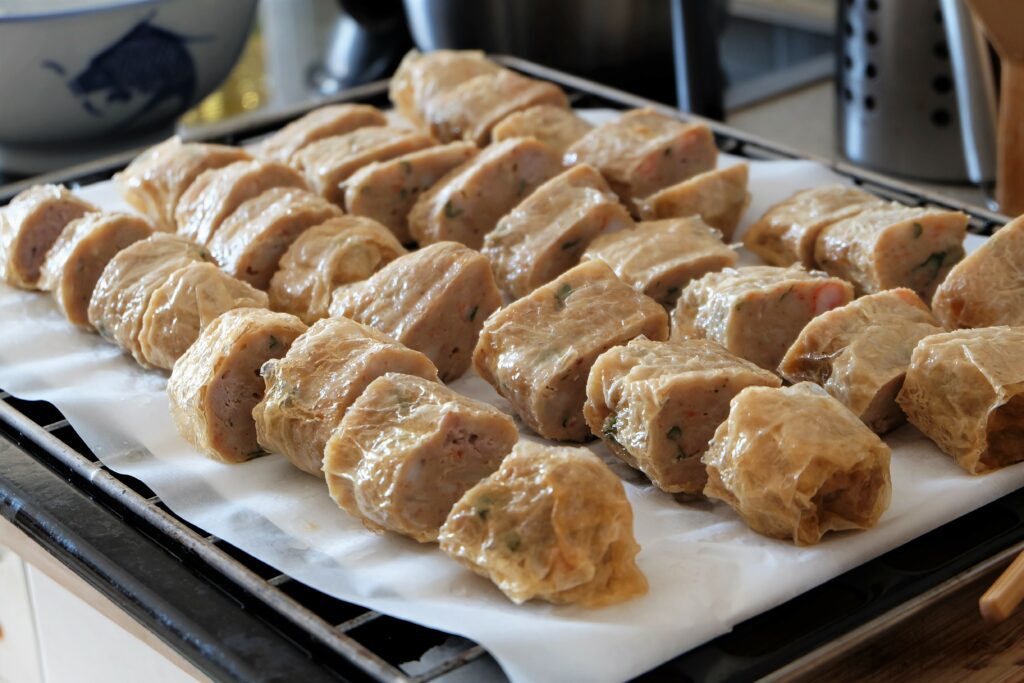
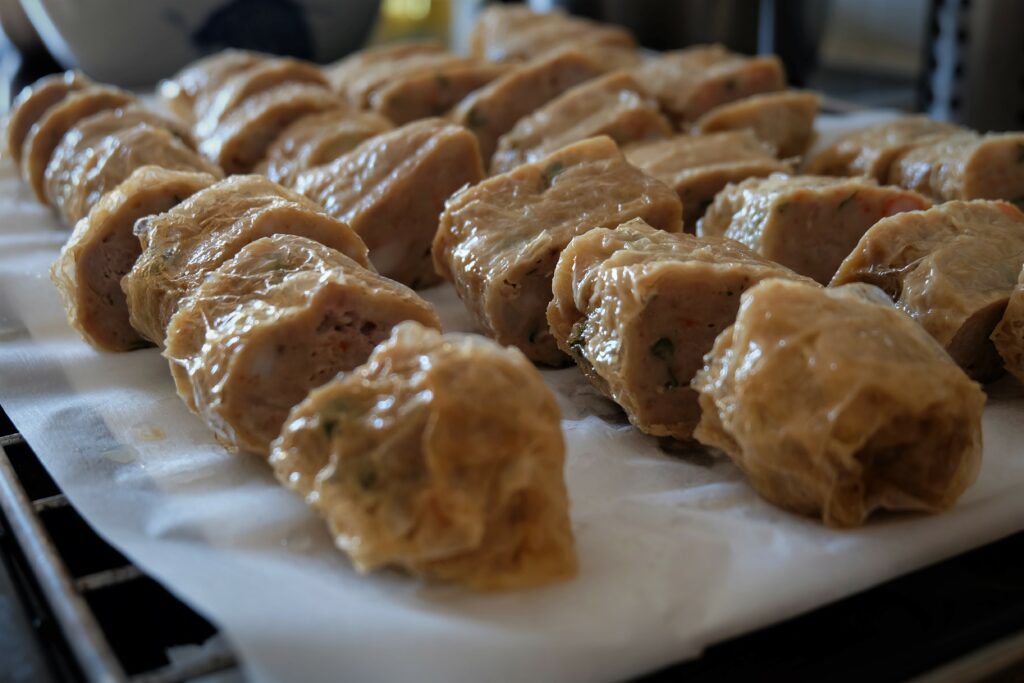
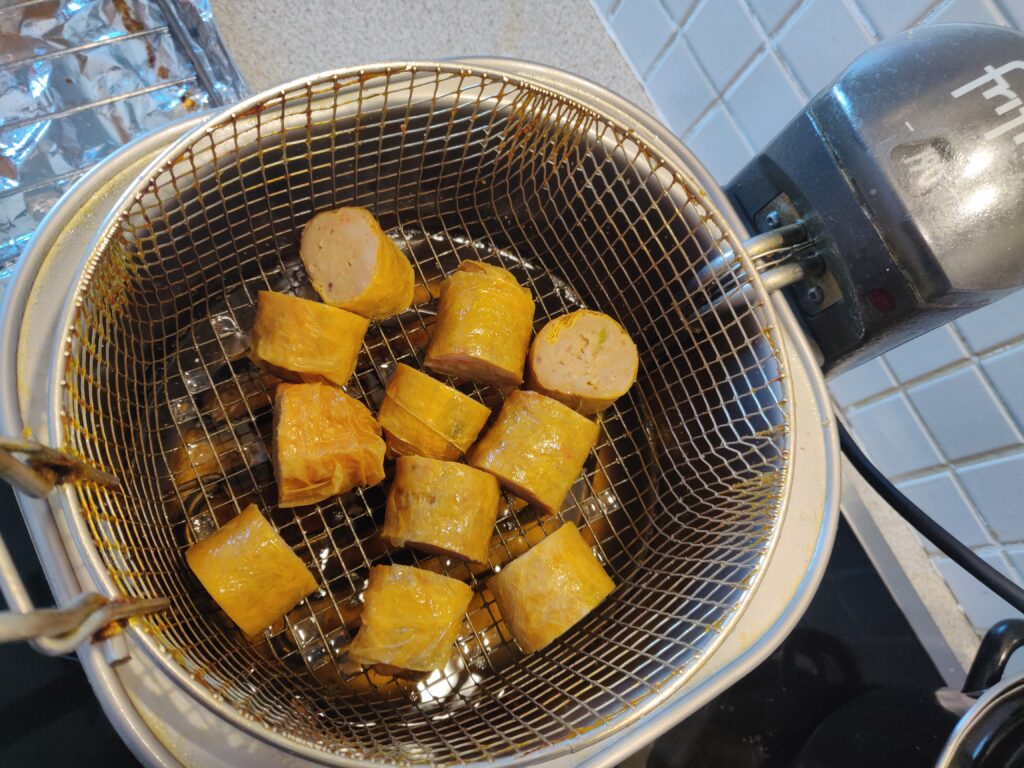
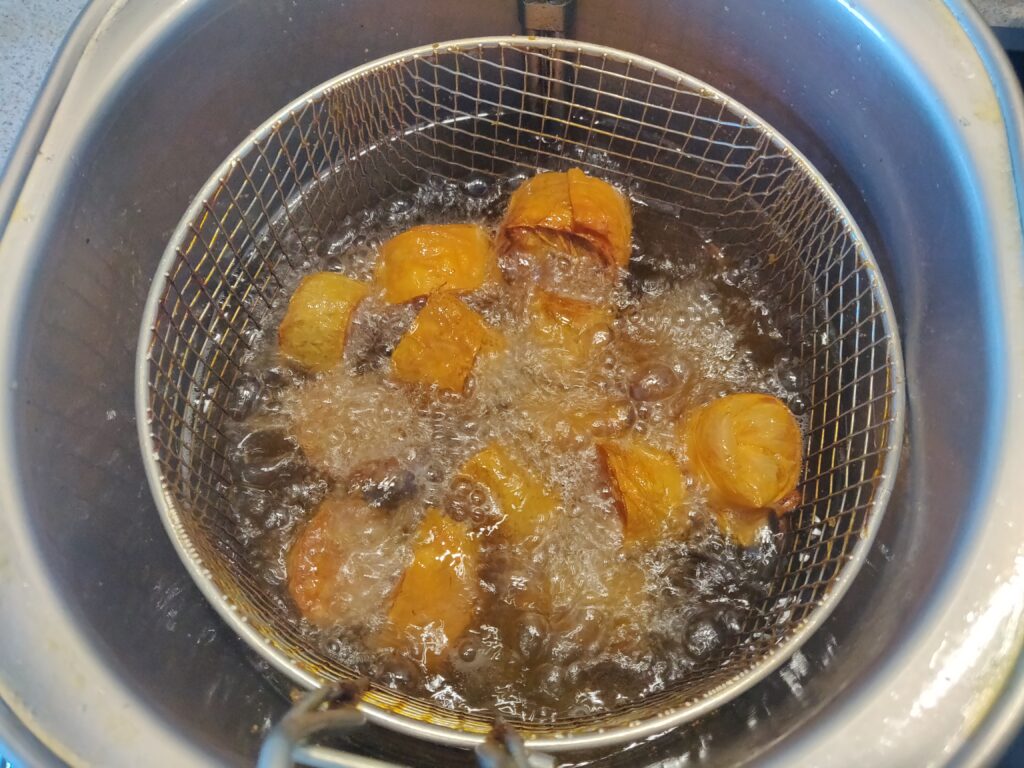
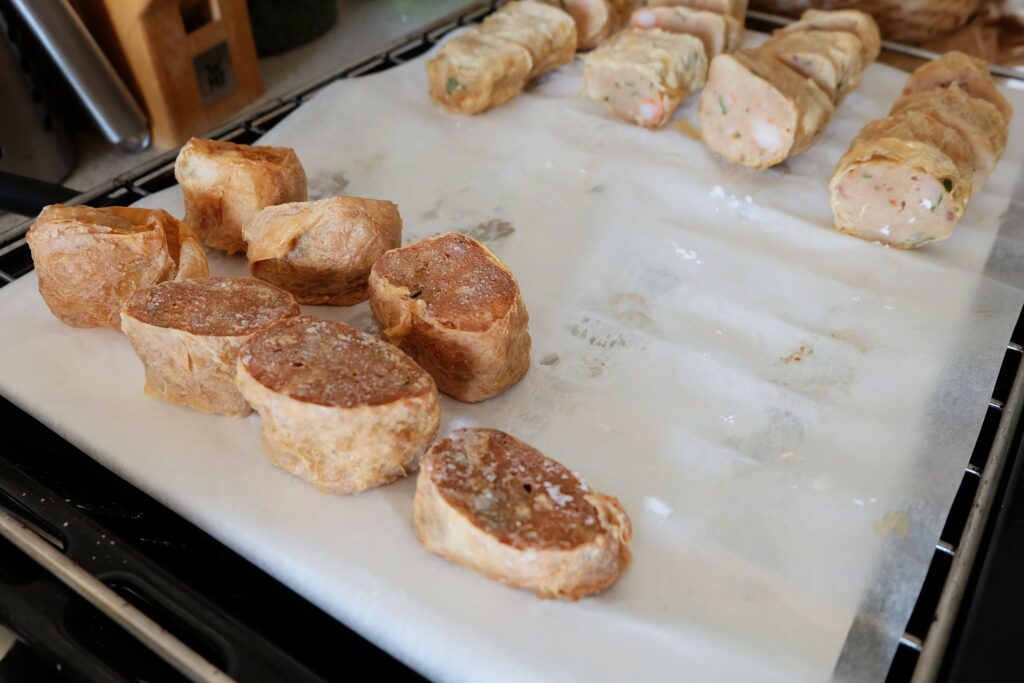
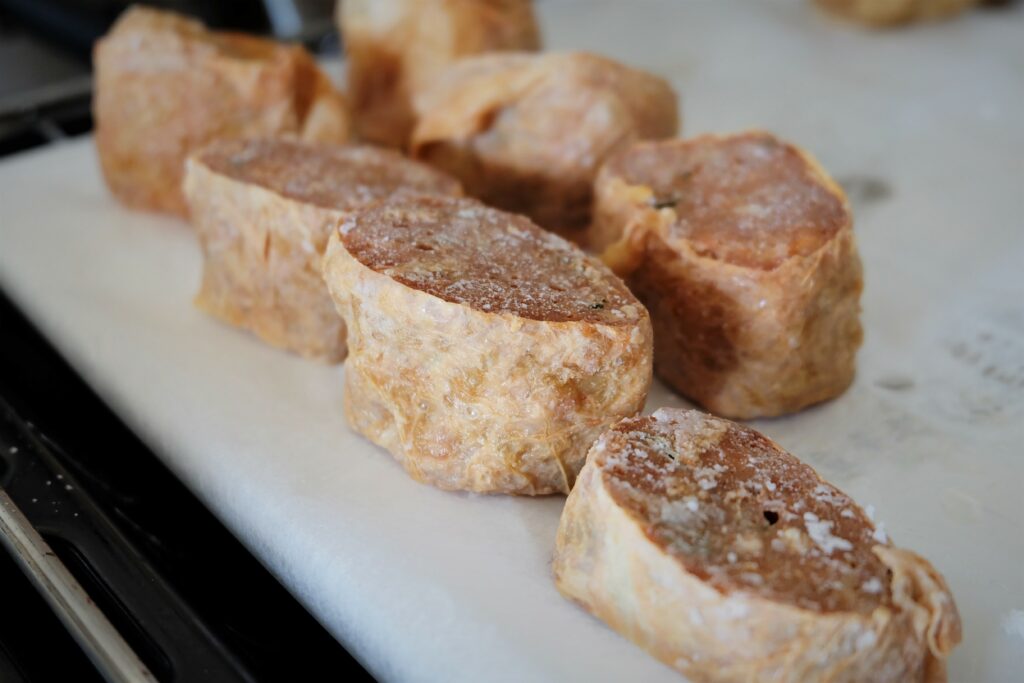
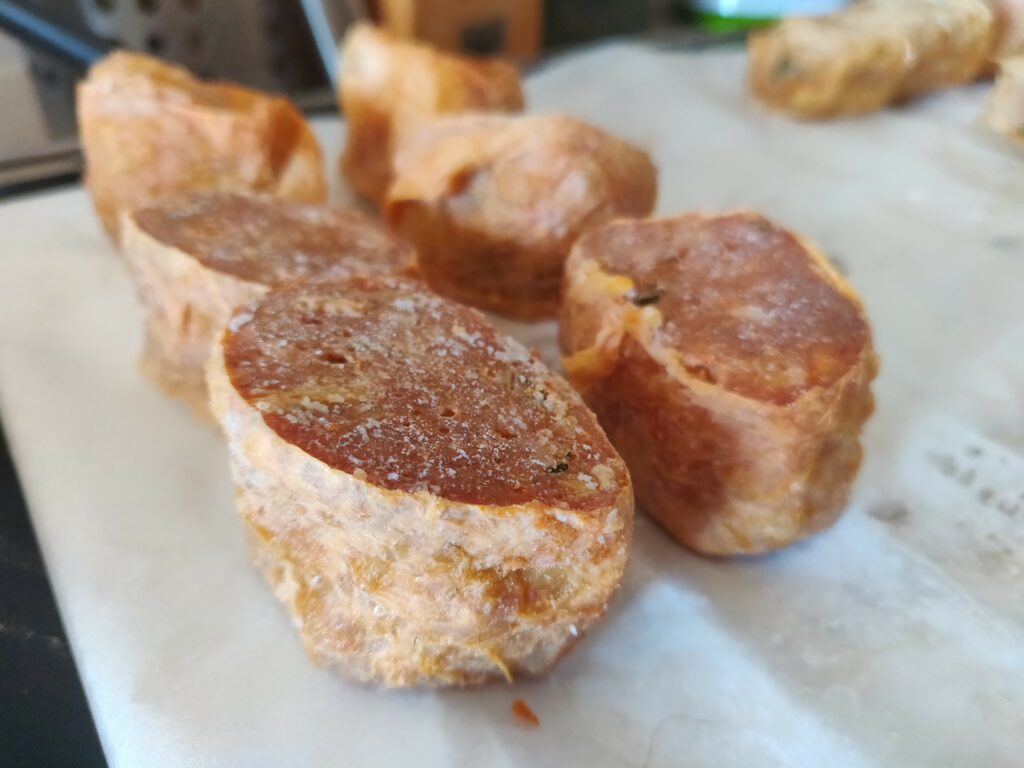
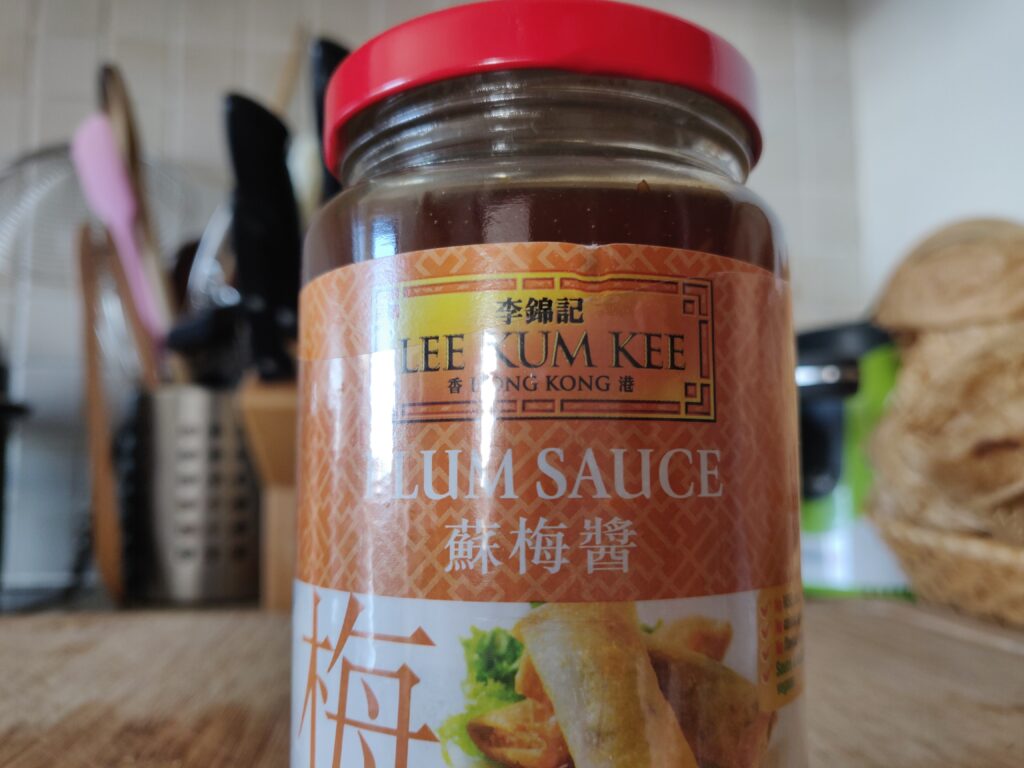
Ingredients:
- 450g minced fatty pork
- 250g fresh tiger prawns, shelled and de-veined
- 150g jìcama, replace with daikon if not available
- 50g carrots, julienned
- 1 small onion
- 2 cloves garlic
- 2 stocks coriander
- 10-15 peeled water chestnut, diced 马蹄/马荠/荸荠/荸薺 (optional)
- 1 tsp white pepper powder
- 1 tsp cane sugar
- 1 tbs five spice powder 五香粉
- 1 tbs fish sauce 魚露
- 1 tsp chicken powder
- 1 tbs fish powder (optional)
- 1 egg
- 1 tbs corn starch (for mixing) 生粉
- 2 big sheets of tofu wrap “Fupi” 鮮腐皮/豆腐皮/腐竹膜
- 2 tbs plain four (for wrapping)
- Sweet potato flour 地瓜粉 (for dusting)
- Frying oil
- Teochew sweet plum sauce ‘Jinjiyou’ 金桔油 for dipping
*Jícama originates from Central America. The Spanish first spread it from Mexico to the Philippines, where it spreads further north to China and south towards Southeast Asia. In Coastal China where the Min people reside, jícama is popularly used in Minnan dishes like popiah 薄餅/lumpia 潤餅 (translated into English as “springrolls“) and this dish. In Southeast Asia, it is called “Bengkuang” in Bahasa, and is used in a popular Singaporean salad called Rojak.
Serving: 32 heyzors
Instructions:
- Grind all your ingredients in a blender into a fine mesh. Thicken with 1 egg and corn starch. Mix with your hand, always stir in the same direction – clockwise or anti-clockwise, in order to get a gluey, firm consistency.
- In a small bowl, mix plain flour with 100ml lukewarm water to make a glue.
- Unfold your tofu wraps and gentle wipe it with a clean wet cloth to get rid of the surface salt. Cut your wraps along the folds into equal-sized sheets about 20cm by 20cm.
- Take a sheet of tofu wrap, brush the whole sheet with your glue. Place 3 tablespoons of your meat mixture onto the middle of each wrap, fold the sides, then roll it into a meatroll.
- Set the complete prawn roll on a greased steaming tray and immediately brush oil all over it to prevent one roll from sticking to another.
- Once all the prawn rolls are completed, steam for 20 minutes in a steamer.
- Once steamed, leave on a drying rack to air-dry for about an hour, then turn to the underside and air-dry for another hour. If needed, do it overnight.
- Once completely dry, cut each prawn roll into four equal pieces.
- Heat up your frying oil in a pot or deepfryer on high heat at 190 degrees Celsius. Dust each heyzor with sweet potato flour before frying.
- Fry your heyzor at medium heat of 150 degrees Celsius such that each heyzor turns golden brown. Leave to drip dry.
- Serve hot with Teochew sweet plum sauce called ‘Jinjiyou’ 金桔油 for dipping. Enjoy!
Tips:
- Cut your tofu wrap along the folds so you won’t have to deal with cracks and tears. Before wrapping your heyzor, make sure your tofu wrap is completely brushed with starch so that the wrap won’t unfold during frying.
- The reason for drying the steamed heyzor is to make sure the tofu wrap does not break during frying. Wet tofu wrap will unfold or break, even with a coating of sweet potato flour.
- You can replace the Teochew sweet plum sauce ‘Jinjiyou’ 金桔油 with sweet soy sauce if you cannot find any.
Before you go, do check out my other Minnan recipes!
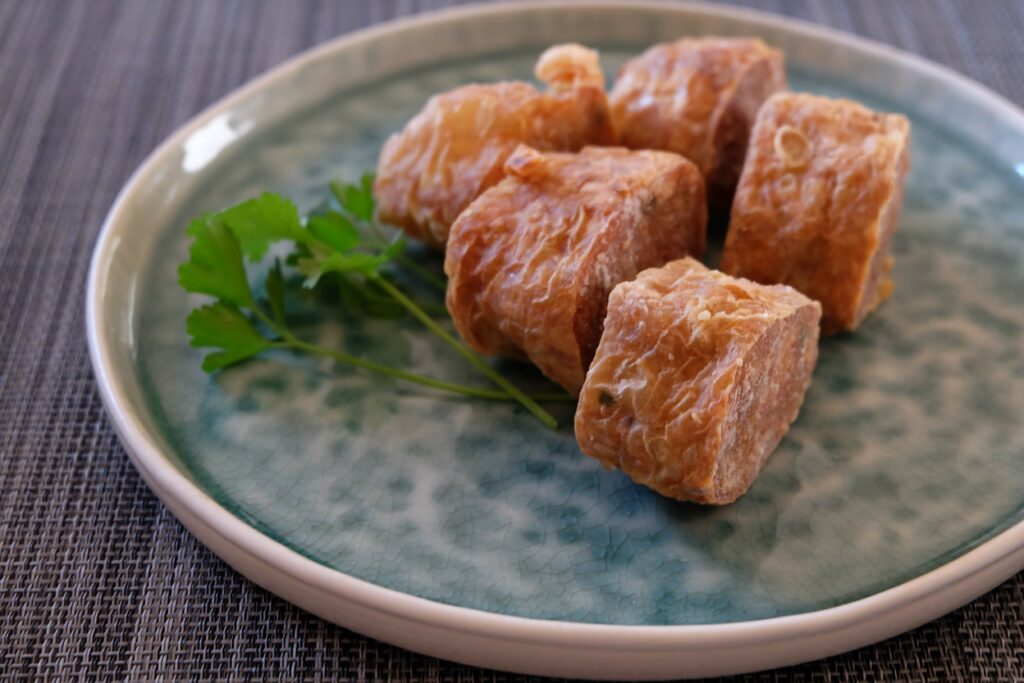

Looks awesome! How long do u have to stir the mixture before it becomes so gluey in consistency? I was stirring in one direction for a good ten minutes and my mixture still didn’t look anywhere as ‘ga niam as in your photo.
Hi Diane,
I don’t think I remember but I would say a good 15 minutes. You need the protein to break down, so that it becomes really sticky but firm. I tend to do it rigorously as well, so the friction accelerates the breakdown.